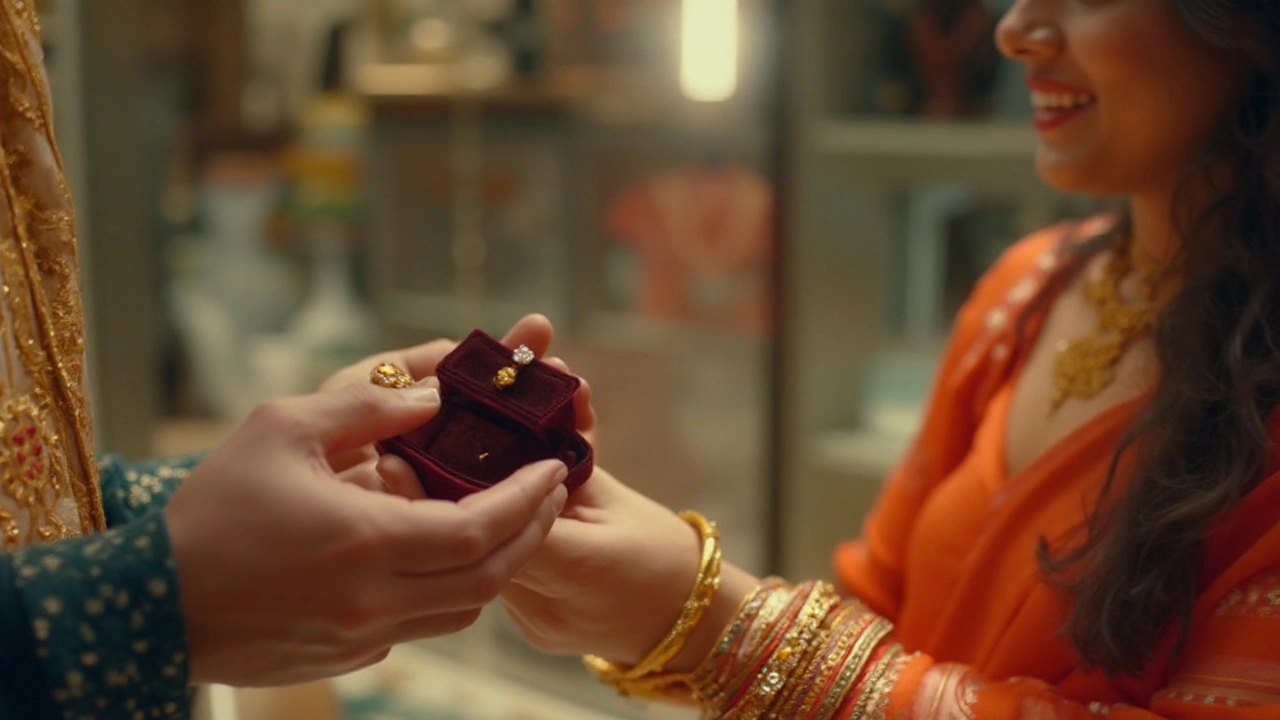
Picture this: someone walks into a jewelry store, wide-eyed, and you can almost see the questions bouncing around inside their head. Is this piece real? Will it look good on me? Will my partner even like it? There’s something oddly intimate about buying jewelry. You’re not just selling a shiny object—you’re selling trust, sparkle, and sometimes a lifelong memory. What you say right at that moment matters more than everything else in the room. The words can turn a hesitant browser into an excited buyer, or just as easily, send them walking to your competitor. The language you use acts like a jeweler’s loupe—revealing what your customer truly wants and how you can help them find it.
Understanding What Jewelry Customers Want to Hear
First things first—people don’t browse jewelry just because they’re bored. Even if they tell you they’re "just looking," there’s curiosity or a secret wish at play. Most folks want reassurance that what they’re buying matches both their taste and their practical needs. So, before you blurt out anything about the 18-carat gold clasp or the UV-checked clarity of the diamond, tune in to why they’re actually there. Did you know over 60% of shoppers say a personalized experience matters more than price? If you want to sell, skip the generic spiel and ask the right questions—something like, "Are you shopping for someone special or treating yourself today?" This unlocks a more personal conversation.
Once you know their goal, gear your talk. If it’s an engagement ring, mention how each diamond is unique, just like their relationship. If it’s a pair of bold hoop earrings for their own collection, share stories of how other clients loved styling them from casual brunches to formal nights out. But—never be fake. People have a radar for insincerity, especially in a high-stakes buy like jewelry. When in doubt, keep your words simple and genuine, focusing on the feeling behind wearing that piece. Those first few words set the stage, so speak like a friendly expert, not a pushy vendor desperate for commission.
Words and Phrases That Spark Desire
Ask any top salesperson: the right phrase at the right moment is worth more than the biggest marketing budget. Here’s where you want to use action-packed, evocative language. Instead of rattling off details, paint a picture. "Imagine sliding this ring onto your partner’s finger—how do you think they’ll react?" Or, "Picture how these earrings will shimmer when the light catches them as you walk into the party." In a 2023 study published in the Journal of Consumer Research, people who could picture themselves owning an item were 33% more likely to buy it. Add words like "timeless," "crafted," "heirloom," or "statement-making" to help your customer visualize and feel the significance beyond the price tag.
Use questions that help the client see themselves with the jewelry. Try, "Would you like to see how this looks in natural light?" or "Do you usually wear gold or silver tones for special occasions?" These kinds of queries create small moments of ownership—each one bringing them closer to buying. Don’t forget the power of positive reinforcement. When they try something on, say, "That color really lights up your eyes," or "It suits your personality—bold and confident." The key is to keep it real. People can tell when you’re just trying to flatter them.

Building Trust Without Sounding Like a Sales Robot
Trust is non-negotiable in jewelry sales. No one wants to buy a supposedly "one-off sapphire" and later spot its twin for half price on a mass-market site. Customers need to know they’re getting value and authenticity, so you need to sound like someone they can rely on—not a robot spouting product codes. Drop details about the piece’s origin, ethical sourcing, and craftsmanship, but only as needed. For example, "This bracelet was handcrafted in Jaipur, using silver from a family-run mine that’s been operating for generations." Those details matter in today’s world, where more buyers are careful about ethical practices and local sourcing.
If the client seems hesitant about price, explain what makes the piece special: "The reason this ring costs a bit more is because of the hand-setting technique that takes over four hours per stone." When you can, share small behind-the-scenes stories—maybe the designer drew inspiration from vintage Parisian brooches or a craftsman spent days perfecting the clasp. These stories make the purchase feel personal, not transactional. And if you’re not sure, admit it and promise to find an answer. Being honest about what you don’t know actually builds more trust than pretending you have all the answers. Transparency wins—every time.
Common Pitfalls: What NOT to Say When Selling Jewelry
Ever walked into a store and heard, "Can I help you find anything?" Pretty uninspired, right? Jewelry buyers crave authenticity and warmth. Avoid cliché phrases like "This is our best-seller," unless you actually have proof. Customers roll their eyes at obvious sales lines: "It’s an investment," "You deserve it," or "This deal is only today"—they’re more likely to put a wall up when they sense desperation. Here’s another trap: overselling. Reeling off every possible technical detail or screaming about certificates makes you sound nervous or inexperienced. Instead, let the jewelry do some of the talking and save the technicalities for when you spot a true enthusiast who genuinely asks.
Don’t minimize their concerns. If they worry about maintenance, avoid "It never tarnishes" if that’s not 100% true. Say instead, "It holds up beautifully with basic care—let me show you how to clean and store it properly." Never interrupt the customer or rush them. Buying jewelry is emotional—these moments can’t be forced. Slow down the pace, listen for real questions, and drop hints about aftercare, returns, or resizing only when relevant. If they ask about discounts, don’t get defensive; just calmly explain the value and why quality costs what it does. One last thing: steer clear of jokes that touch on relationship drama, like "Better buy now, or you’ll be in trouble!" Instead, respect the fact that the decision may take time.

How to Close the Sale with Sincerity and Confidence
So, what’s the secret to wrapping it up when things feel promising? It’s all about reading the room. If your customer lingers, asks lots of questions, or keeps trying the piece on "one more time," it’s a green light. Now is when you gently nudge: "It looks like you really enjoy wearing this—would you like us to wrap it up for you?" Or, "Do you want to take a closer look at how it sits with your other jewelry?" These closing questions aren’t pushy. They feel more like an invitation than a demand.
If your client hesitates, zoom in on reassurance: "We have a flexible return policy if you’d like more time to decide," or "I can save this piece for you today so you have some time to think it over." According to a 2022 Nielsen survey, people are 40% more likely to buy when they don’t feel pressured. Bring out small perks to seal the deal—maybe free cleaning for a year, a quality box, or a handwritten thank you card. All of these details transform a sale into a memorable experience.
Finally, if you truly believe in the piece, say so—"Honestly, out of everything we have right now, this is the one I’d pick for myself." If a customer needs extra info, don’t be afraid to slow things down. Offer to text or email more photos, or invite them back with a friend. Genuine confidence and patience signal to buyers that you care more about their happiness than just snagging a sale. At the end of the day, people buy jewelry for how it makes them feel—and that feeling starts with what you say.


